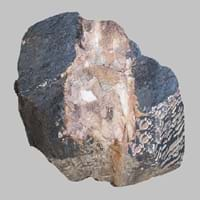Definition
Claystone is a fine-grained, dark gray to pink sedimentary rock which mainly consists of compacted and hardened clay
Granite is a very hard, granular, crystalline igneous rock which consists mainly of quartz, mica, and feldspar and is often used as building stone
Discoverer
Unknown
Unknown
Etymology
From English clay and stone as the rock contains more amount of clay
From Italian granito, which means grained rock, from grano grain, and from Latin granum
Class
Sedimentary Rocks
Igneous Rocks
Sub-Class
Durable Rock, Medium Hardness Rock
Durable Rock, Hard Rock
Group
Not Applicable
Plutonic
Other Categories
Fine Grained Rock, Opaque Rock
Coarse Grained Rock, Opaque Rock
Texture
Clastic
Granular, Phaneritic
Color
Black, Blue, Brown, Green, Grey, Orange, Red, White, Yellow
Black, Grey, Orange, Pink, White
Durability
Durable
Durable
Scratch Resistant
Yes
Yes
Appearance
Rough and Dull
Veined or Pebbled
Interior Uses
Decorative Aggregates, Entryways, Floor Tiles, Homes, Interior Decoration
Countertops, Decorative Aggregates, Entryways, Floor Tiles, Flooring, Homes, Hotels, Interior Decoration, Kitchens, Stair Treads
Exterior Uses
As Facing Stone, Roof Tiles
As Building Stone, As Facing Stone, Bridges, Paving Stone, Garden Decoration, Near Swimming Pools, Office Buildings, Resorts
Other Architectural Uses
Curbing
Curbing
Construction Industry
As a Sintering Agent in Steel Industry to process Iron Ore, Cement Manufacture, Construction Aggregate, for Road Aggregate, Making natural cement, Raw material for the manufacture of mortar
As Dimension Stone
Medical Industry
Not Yet Used
Not Yet Used
Antiquity Uses
Artifacts, Sculpture, Small Figurines
Monuments, Sculpture, Small Figurines
Commercial Uses
Pottery
Curling, Gemstone, Laboratory bench tops, Tombstones, Used in aquariums
Types
Not Available
Igneous Protolith Granite, Sedimentary Protolith Granite, Mantle Granite, Anorogenic Granite, Hybrid Granite, Granodiorite and Alkali Feldspar Granite
Features
Available in Lots of Colors and Patterns, Smooth to touch, Very fine grained rock
Available in Lots of Colors and Patterns, It is One of the Oldest, Strongest and Hardest Rock
Archaeological Significance
Monuments
Not Yet Used
Used
Famous Monuments
Not Applicable
Agia Sophia in Istanbul, Turkey, Blue Domed Church in Santorini, Greece, Blue Mosque in Istanbul, Charminar in Hyderabad, India, Diana, Princess of Wales Memorial Fountain in London, UK, Ephesus in Turkey, Georgia Guidestones in Georgia, US, Hermitage in Saint Petersburg, Khajuraho Temples, India, Mahabalipuram in Tamil Nadu, India, Mysore Palace in Karnataka, India, Signers Monument in Augusta, Georgia, Statue of Liberty in New York, USA, Taj Mahal in Agra, India, Tower Bridge in London, Vietnam Veterans Memorial in Washington, US, Washington Monument, US
Famous Sculptures
Data Not Available
Avukana Buddha Statue in Sri Lanka, Lincoln Memorial in America, Mount Rushmore National Memorial in South Dakota, US, The Colossal Red Granite Statue of Amenhotep III in Karnak, Egypt
Pictographs
Used
Not Used
Petroglyphs
Used
Not Used
Formation
Claystone is generally quite soft, but can be hard and brittle. It forms due to weathering of mudstone.
Granite is an intrusive igneous rock which is very hard, crystalline and is visibly homogeneous in texture and forms by melting of continental rocks
Mineral Content
Biotite, Chlorite, Feldspar, Micas, Muscovite or Illite, Plagioclase, Pyrite, Quartz
Amphibole, Biotite, Feldspar, Hornblade, Micas, Muscovite or Illite, Plagioclase, Pyroxene, Quartz
Compound Content
Aluminium Oxide, Ca, NaCl, CaO, Iron(III) Oxide, MgO, Silicon Dioxide
Aluminium Oxide, CaO, Iron(III) Oxide, FeO, Potassium Oxide, MgO, MnO, Sodium Oxide, Phosphorus Pentoxide, Silicon Dioxide, Titanium Dioxide
Types of Metamorphism
Not Applicable
Burial Metamorphism, Cataclastic Metamorphism
Types of Weathering
Biological Weathering, Chemical Weathering, Mechanical Weathering
Biological Weathering
Types of Erosion
Coastal Erosion, Water Erosion
Chemical Erosion, Sea Erosion, Water Erosion
Grain Size
Fine Grained
Large and Coarse Grained
Fracture
Not Available
Not Available
Porosity
Very Less Porous
Less Porous
Luster
Dull
Dull to Grainy with Sporadic parts Pearly and Vitreous
Compressive Strength
Not Available
Cleavage
Perfect
Not Available
Toughness
2.6
Not Available
Specific Gravity
0
2.6-2.7
Transparency
Opaque
Opaque
Density
2-2.9 g/cm3
2.65-2.75 g/cm3
Resistance
Heat Resistant, Impact Resistant
Heat Resistant, Wear Resistant
Deposits in Eastern Continents
Asia
Bangladesh, China, India, Russia
China, India, Iran, Saudi Arabia, Sri Lanka, Taiwan, Thailand, Turkey, Vietnam
Africa
Ethiopia, Kenya, Morocco, South Africa, Tanzania
Angola, Egypt, Madagascar, Namibia, Nigeria, South Africa
Europe
Austria, France, Germany, Greece, Italy, Romania, Scotland, Spain, Switzerland
Austria, Belgium, Finland, France, Germany, Italy, Norway, Sardinia, Spain, Switzerland, The Czech Republic, Venezuela
Others
Not Yet Found
Not Yet Found
Deposits in Western Continents
North America
Canada, Panama, USA
Canada, USA
South America
Bolivia, Chile, Colombia, Ecuador, Peru, Venezuela
Not Yet Found
Deposits in Oceania Continent
Australia
New South Wales, New Zealand, Queensland, Victoria, Western Australia
Not Yet Found










